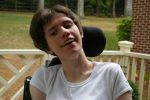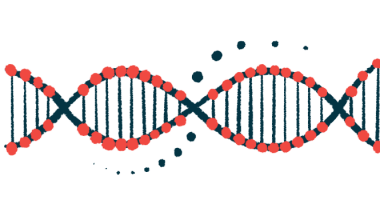Gene Therapy Effective in CLN7 Mice, Supports Ongoing Phase 1 Trial

Gene therapy safely and effectively eased the signs and symptoms of CLN7 disease, a form of late-infantile Batten disease, in cells and a mouse model, a study demonstrated.
These findings supported the launch of a Phase 1 trial (NCT04737460), being conducted at Dallas Children’s Hospital, in Texas, involving up to four patients, ages 1–18.
Researchers reported “strong proof-of-concept evidence” for the therapy’s use in clinical trials.
The study, “AAV9/MFSD8 gene therapy is effective in preclinical models of neuronal ceroid lipofuscinosis type 7 disease,” was published in the Journal of Clinical Investigation.
In CLN7, a faulty MFSD8 gene leads to waste buildup inside lysosomes, the cellular compartment that stores, recycles, and degrades waste. Nerve cells are particularly affected, resulting in seizures, motor and mental impairments, speaking difficulties, and vision loss. These symptoms usually appear in pediatric patients around the ages of 2 to 5.
A research team led by Steven Gray, PhD, at the University of Texas Southwestern (UTSW) Medical Center, developed a first-generation CLN7 gene therapy to replace the faulty MFSD8 gene with a functioning copy and deliver it to cells by a harmless adeno-associated virus (AAV9).
The therapy is currently being assessed in a Phase 1 clinical trial run by the university. Safety and tolerability are the study’s main objectives, with secondary outcomes including motor and mental function changes, and quality of life.
Taysha Gene Therapies secured an exclusive option from UTSW last year to license the worldwide rights to the therapy, and is collaborating with the university to continue developing a next-generation version.
In this report, Gray and colleagues describe the development of the gene therapy (AAV9/MFSD8), from early tests in cells isolated from a CLN7 patient to its complete evaluation in a CLN7 mouse model.
For the initial proof-of-concept experiments, fibroblast cells, the most common cell type in connective tissue, were obtained from tissue biopsies of a CLN7 patient with confirmed MFSD8 mutations.
The fibroblasts were treated with increasing doses of the gene therapy, resulting in a dose-dependent enhancement in lysosomal function, with a twofold increase at the highest dose. The team reported no significant changes related to toxicity.
Next, researchers infused a low and high dose of the gene therapy into the space surrounding the spinal cord — a method called intrathecal administration — of mice that lacked both Mfsd8 genes (one from each parent), seven to 10 days after birth (p7-10), representing a pre-symptomatic phase.
At 4.5 months, both doses of gene therapy fully restored compromised lysosomal activity in mice lacking both Mfsd8 genes. Examination of brain tissue found the high dose slowed or prevented the signs of disease progression.
The high dose of gene therapy, when administered early (p7-10), more than doubled the lifespan of the CLN7 mice compared with untreated mice — 16.8 vs. 7.8 months. In contrast, a dose given at six months of age showed no survival benefit, “further supporting that CLN7 needs to be treated early to be effective,” the researchers wrote.
In addition, untreated CLN7 mice lost body weight rapidly starting at about six months, whereas gene therapy-treated mice maintained their age- and dose-dependent normal body weight longer.
Researchers observed no neurological symptoms or general illnesses related to treatment, suggesting the gene therapy “is effective and safe in this preclinical disease model.”
No signs of behavioral deficits were seen in the animals, as measured by the rotarod test — widely used to evaluate the motor coordination of rodents — or the open field and marble burying tests, by 2 to 4 months of age. At 6 months, untreated CLN7 mice showed significant impairments, but they were rescued by early treatment with a high dose of gene therapy.
Further testing at 9 months of age showed all treated animals performed better on the rotarod test than the untreated animals, with early treatment being more beneficial. Total distance traveled in the open field test showed significant differences, but hyperactivity remained comparable to controls.
By 12 months, all untreated CLN7 mice had died, but most treated animals were able to perform on the rotarod test. At the high dose, mice treated early were comparable with unaffected controls. By 18 months of age, the only mice still living were either controls or CNL7 mice treated early with a high dose of gene therapy.
“Taken together, there were significant behavioral deficits starting from 6 months old in the [CLN7] mice and some deficits seen on the rotarod and open field were completely restored in the p7-10 high dose group, with a trend towards improvement in some other treatment groups,” the researchers wrote. “All these results indicate positive treatment effects of [gene therapy] in both survival and quality of life.”
Safely and tolerance testing in healthy mice followed for one year after gene therapy infusion showed no differences in body weight, signs of disease, microscopic tissue findings, or survival compared with mice not infused. Similar safety experiments in rats also showed widespread distribution of MFSD8 DNA across the rat body, with no changes in clinical observations, mortality, rotarod performance, body weight, or food consumption.
“The results achieved in these studies demonstrate that AAV9/MFSD8 is both effective and well-tolerated in preclinical models, providing strong proof-of-concept evidence that AAV9/MFSD8 [gene therapy] should be considered for human translation,” the researchers concluded.








